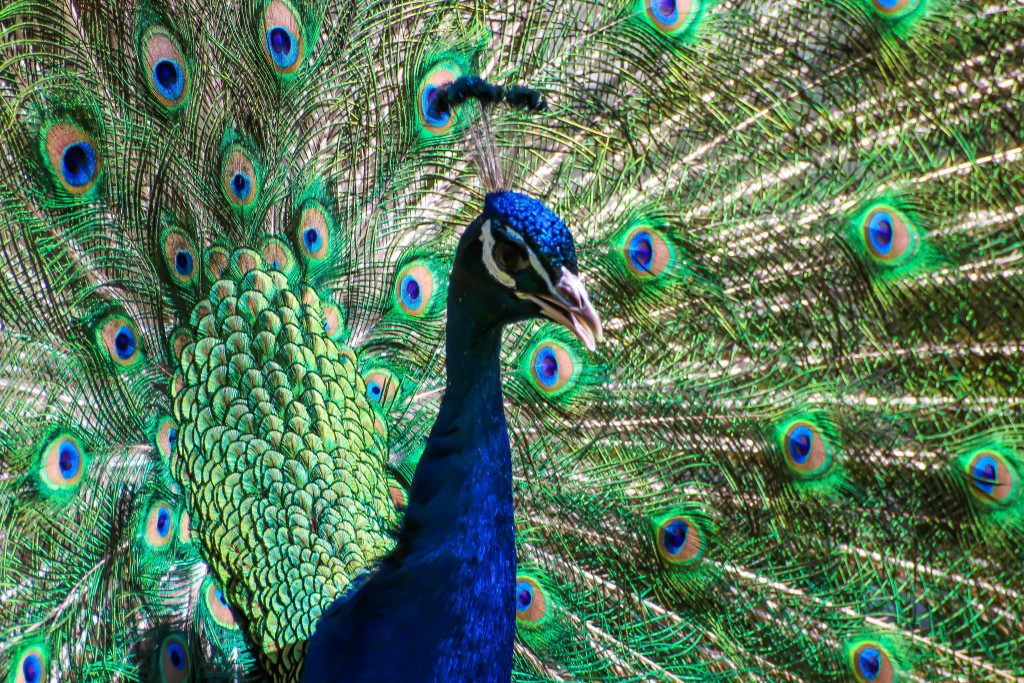
Structural color is color caused by interference effects rather than dyes or pigments. It is responsible for the blues and greens of the feathers of many kinds of birds as well as bright colors in butterfly wings, beetle wing cases, and oyster shells.
These colors are produced by light interacting with materials with fine parallel lines, parallel thin layers, or other microstructures on a length scale of the color’s wavelength. A classic example are peacock tail feathers, which actually have a brown pigment, but iridescently glow with blue, turquoise and green because of their structural coloration.
A research group at the University of Akron is looking into the possibility of producing synthetic substances to provide structural color without the use of pigments and dyes. One could have T-shirts that don’t fade with time and cars that never need a new coat of paint. Structural color does not diminish in hue over time.
The researchers are working on producing synthetic particles that mimic the tiny packets of melanin found in feathers. Dyes and pigments are both financially and environmentally costly. Structural colors, at least in theory, could be produced using common, environmentally friendly materials. In addition, since the colors result from light interference effects, it might even be possible to be able to change the color of an object depending upon the environment or even just personal preference.
This work on structural color is one example of the growing field of biomimicry research, which seeks to improve human life by imitating the successes of natural designs and methods.
**********
.
Web Links
Researchers analyze the structure of bird feathers to create hues without dye
Photo, posted May 1, 2014, courtesy of Susanne Nilsson via Flickr.
.
Earth Wise is a production of WAMC Northeast Public Radio.

If you live in the Hudson Valley and want to learn more about biomimicry, sign up for our summer institute, July 28-30, in Hyde Park, and featuring “Biomimicry: Inspire Students with Today’s Science and Tomorrow’s Jobs.” This half day field experience includes a tour of a living building and workshop with Dorna Schroeter, director, Center for Environmental Education, Putnam-Northern Westchester BOCES. Learn more: http://www.teachingthehudsonvalley.org/2015overview/